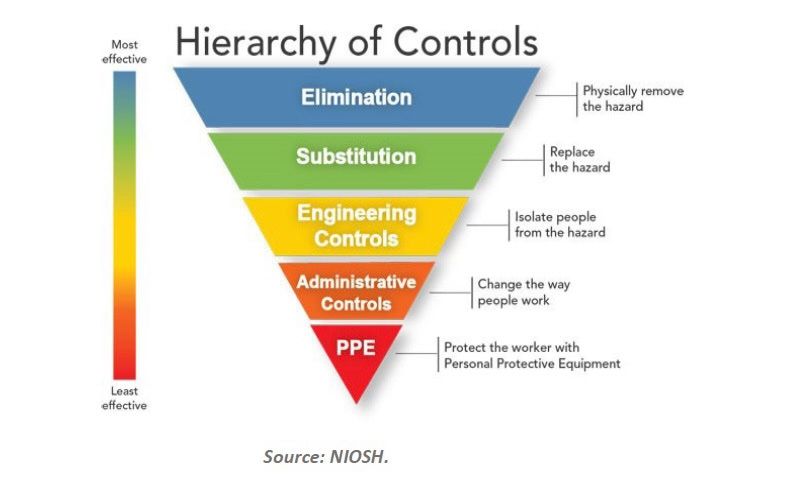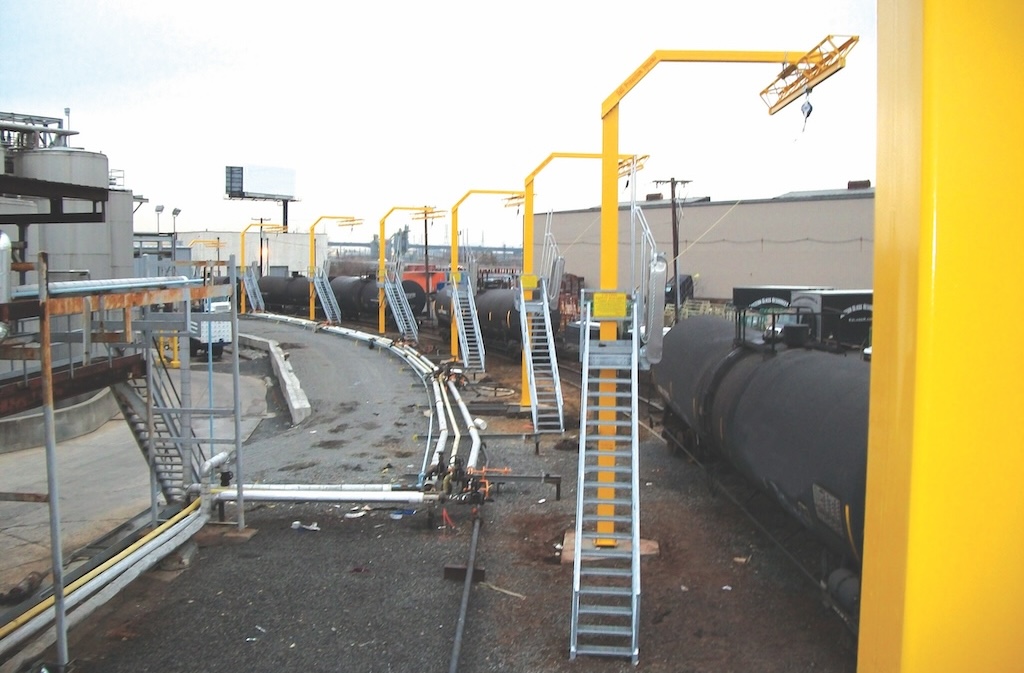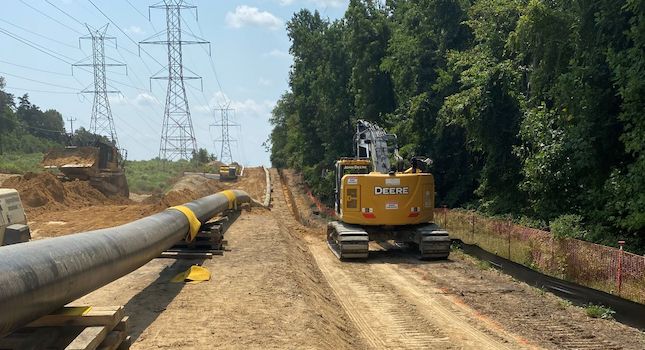Controlling inventory can be an agonizing task for a manufacturer. Keeping track of raw materials, works-in-process and finished products is obviously critical to a company’s bottom line; these items have to be well-managed and accounted for. But tracking them may not even be half the battle. None of those materials get processed and out the door as finished products without being brought...
Controlling inventory can be an agonizing task for a manufacturer. Keeping track of raw materials, works-in-process and finished products is obviously critical to a company’s bottom line; these items have to be well-managed and accounted for. But tracking them may not even be half the battle.
None of those materials get processed and out the door as finished products without being brought into the manufacturing facility, processed by the machines and employees on the floor and then moved out of the facility to dealers and retailers. So add capital assets to the list. And what about those capital assets? Let’s not forget their maintenance requirements, many of which require tools and replacement components. Hmm, more stuff to keep track of.
All of this is why manufacturers have been blessed — cursed? — with computerized maintenance management systems, enterprise asset management systems, manufacturing execution systems and enterprise resource planners. These systems are designed to not only track the types and quantities of inventory, but many can also alert plant personnel when a particular machine needs a fix or when a raw material needs replenishment.
But do they work together to provide real-time information on inventory, moving that information to the parties that need it? Can they work together to do that? As manufacturers continue to move toward achieving Lean principles, they’re going to have to.
Inventory management evolution
“Traditionally, inventory management has been offered in the form of a CMMS or an EAM system,” said Melissa Morgan, a product marketing manager for Iconics, Inc., an automation software company based in Foxborough, MA. “These software packages encapsulated all of the basic functions of inventory management such as inventory tracking, inventory optimization, stock counting, material availability and work-order tracking.
“
Then in the early 1990s, the evolution of MES started to blur the line between MES and EAM,” Morgan explained. And as MES grew with new capabilities for planning, execution and control, inventory management could be incorporated as well. “On top of that, major ERP vendors began to offer inventory control and management functionality in their systems as well,” Morgan added.
In 2007, the capabilities of the systems are not as much the issue as is getting the systems to communicate with each other. Interoperability, facilitating the exchange of information between systems, is key today.
“There’s no one dominant type of system that seems to be emerging, but what does seem to be emerging is the need for more open architecture for the systems to be able to interact with one another,” said Brent Ray, CEO of Surplustrack.com, an Ann Arbor, MI-based Internet solution for remarketing excess inventory and nonperforming assets. “That open nature, that flexibility, that ability to create the electronic interface is really going to be the key to moving forward.”
“Interoperability has become one of the most important requirements for any new software system,” Morgan commented. “It does not matter how many layers of software there are between the shop floor and the top floor as long as they all know how to talk to each other.”
“Today’s ERP systems are integrating supply chain management into the software,” said Andrew Gager, CPIM for Life Cycle Engineering, Inc., Charleston, SC. “By doing so, they create a seamless, integrated information flow from suppliers to the operation.” The software can place orders, track purchase orders and check order status and invoice, he added. “Complement this with planning, forecasting, production orders, capacity planning, resource allocation and equipment utilization, and we have a very powerful tool.”
Leveraging technologies like web services, XML transaction sets and things like UNSPSC coding for communizing part descriptions across an industry or across an enterprise are ways Ray said to facilitate the interaction between these systems. He also mentioned how pervasive computing can help the process.
RFID counts
“[It] is being able to have mobile devices that can capture and transmit data in almost real time,” he said. “We’re seeing a lot of organizations that are investing in a Wi-Fi or a wireless infrastructure in their manufacturing facilities, and that really provides a great backbone for getting real-time information. The more that that occurs, the more that technologies like bar-coding, or even more so like RFID are employed, I think that real-time information — that real-time visibility — can occur.” By leveraging the power of the Internet, he said, manufacturers can make their data visible across the enterprise.
This approach lends yet another application for RFID. While much of the focus for RFID’s use has been on the supply chain outside of the manufacturing process, manufacturers can also consider the benefits of its use within their own facilities. Not only can it provide tracking for company supplies, raw materials and works-in-progress, it can also help identify surpluses.
“A lot of manufacturers don’t even realize the amount of surplus and excess that they have,” Ray said. “RFID could eventually provide much better utilization of critical spare parts that are no longer viable or inventory that’s no longer viable, and rather than continue to accumulate a lot of surplus material, [manufacturers] can address that material in a much more timely fashion and make certain that they can either repurpose it elsewhere in the enterprise or turn it into cash.”
Time for real time
With each of these systems working together, information can be generated and disseminated increasingly in real time. This will enable manufacturers to move toward more Lean manufacturing environments.
“One of the things that we encounter today is that without real-time information, there’s way too much inventory in the supply chain, where, because the data still isn’t as accurate and as timely as people would like, people are putting in a buffer factor to make certain that they’re not running out of goods. As information becomes more real-time, I think that that’s going to help tremendously,” Ray said.
And as real-time data moves continuously from the production floor to the corner office, “The impact to materials management will be instantaneous,” Gager said. “Materials can react quicker and more decisively than ever before.”
Future is Lean
“It is likely that the future of inventory management will be centered on continuous improvement concepts like just-in-time, kanban and Lean manufacturing to ensure that the plant is operating as efficiently as possible,” added Morgan.
“I think everybody again is focusing on Lean practices. They’re spending a tremendous amount of time on process efficiencies,” said Ray. “But if the systems don’t support those endeavors and those projects, then it’s really, really tough to measure and it’s really tough to gain compliance. So I think that’s the challenge: is that a lot of these systems and the evolution of these systems need to be able to support the processes better.”
Manufacturers need to track materials within a facility more efficiently, and they need better, real-time reporting, Ray continued. That will allow their analytics to be much more useful in the decision-making process.
“Sometimes the historical data that these systems are producing is just that — it’s too historical. And by the time folks get a chance to review it, they’re really not staying ahead of the curve,” he said.
“Computers or software do not provide solutions to inventory management problems. Computers and accompanying software are tools. They must be used in the proper business environment in order to work effectively,” Gager said.
The Bottom Line…
Interoperability is key when it comes to inventory management. Software systems have to be able to communicate to effectively manage inventory.
RFID isn’t solely for use after production. Use it to track in-house assets and identify surpluses.
The flow of information from the plant floor to the corner office in real-time allows companies to make faster and better decisions and can improve the bottom line.
Software systems need to be considered when implementing Lean processes to ensure the systems support the processes.
Golden elected to board of directors
Eaton Corporation recently announced the election of Charles E. Golden to its board of directors. Golden retired from Eli Lilly and Company in 2006, where he served as executive vice president and chief financial officer, and as a member of the company’s board of directors.
Prior to joining Eli Lilly, Golden served as a corporate vice president of General Motors Corporation and chairman and managing director of Vauxhall Limited, General Motors Corporation’s vehicle operations in the United Kingdom.
“Charles brings a valuable perspective to our business through his extensive background in finance, international business, and operations,” said Alexander M. Cutler, Eaton chairman and CEO.
Yurek named ARI president
The Air-Conditioning and Refrigeration Institute has named Stephen R. Yurek president. Yurek joined ARI in 2002 as general counsel and was promoted in 2006 as COO.
Yurek came to ARI from the education community, having served as vice president of business development and public affairs for CompassLearning, Inc. Before that he was general counsel and COO at the National Association of Secondary School Principals.
“We are excited to have a person of Steve Yurek’s character, vision, and experience leading our association during a challenging time,” said Robert Wilkins, ARI chairman.
OSHA issues final rule on electrical installation standard
The Occupational Safety and Health Administration’s final rule for an updated electrical installation standard was published in a recent issue of the Federal Register.
“These are the first changes to the electrical installation requirements in 25 years, so it is important the standard reflects the most current practices and technologies in the industry,” said Edwin G. Foulke, Jr., assistant secretary for occupational safety and health. “The revised standard strengthens employee protections and adds consistency between OSHA’s requirements and many state and local building codes which have adopted updated National Fire Protection Association and National Electrical Code provisions.”
Changes to OSHA’s general industry electrical installation standard focus on safety in the design and installation of electric equipment in the workplace. The updated standard includes a new alternative method for classifying and installing equipment in Class I hazardous locations; new requirements for ground-fault circuit interrupters and new provisions on wiring for carnivals and similar installations.
The final rule updates the general industry electrical installation requirements to the 2000 edition of NFPA 70E, which was used as the foundation of the revised standard. The final rule also replaces the reference to the 1971 National Electrical Code in the mandatory appendix to the powered platform standard with a reference to OSHA’s electrical installation standard.



